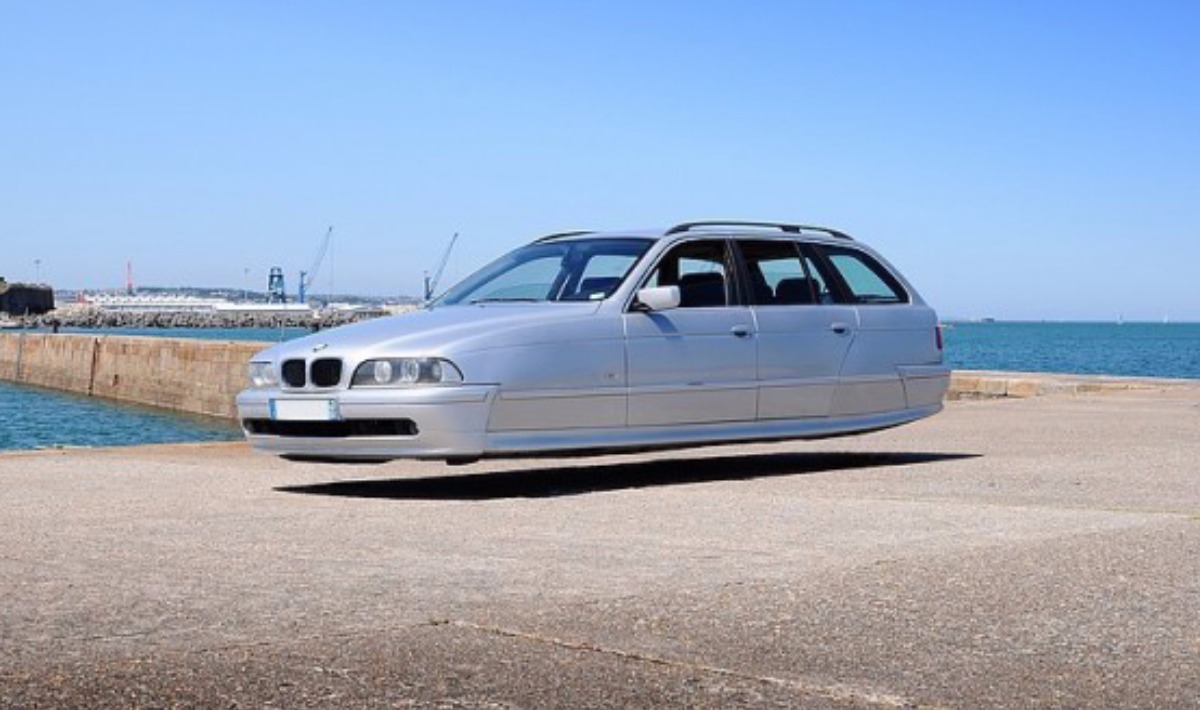As vehicles get more advanced, incredible high tech changes are happening for safety, drives enjoyment, better performance, improved fuel mileage and lower emissions. 
Most technical advances start on high end vehicles and work into the common, lower priced vehicles. Three of these are ABS Brakes, (anti-lock brakes), SRS, (Air bag systems) and ESC or ESP, (computerized technology that improves a vehicle's stability by detecting and reducing loss of traction (skidding). All three of these started on high end vehicles but now are required on all newer vehicles.
Some of the high tech items that are in upper end cars include radar that map out the road surfaces in front, looking for pavement irregularities such as pot holes and then do adjustment to the suspension for a smoother ride. Yes, it can ever “see” under the vehicles in front of you. LED headlights are now coming into popularity now. They use less power and can be controlled extensively. No longer do you have just high and low beams, LED headlights with forward looking cameras can scan for surfaces that can reflect light back into your eyes. An example would be road signs, the headlights would dim just part of the LEDs so not to put a stain on your eyes.
Using your cruise control on the freeway? When coming up behind a slower vehicle, just put on your turn signal, your vehicle will change lanes for you and adjust speed accordingly. Forget to turn on your turn signal to changes lanes? Your smart vehicle will put the brakes slightly on the side away from where you are turning to help nudge you back in your lane. This would also work if you’re not paying attention while driving.
The vehicles that are becoming the first generation of anonymous driving (self-driving) even know if you have your hands on the steering wheel by a torsion bar (kind of spring) in the steering rack and pinion (steering gear).
Newer vehicles will add more enjoyment and safety to your ride.
Emergency situation.
A modern automobile is an incredible, almost unbelievable, collection of high tech electronics connected together to provide a safe comfortable ride a various conditions.
The engineering of getting all these components to work together with dependability in a hostile environment amazes me daily,
Most vehicle manufactures have over 500 different companies that provide the parts to make up a complete vehicle.
Problems do happen and I want to give incite here to make sure the correct procedures are followed in case of emergencies.
When something happens out of the ordinary, the first thing to remember is to stay calm and not panic. With a plan and thoughtful pre-planning, it may bypass panic. In panic mode, many people just freeze, not knowing what to do. Read this carefully and remember what to do.
If the engine dies while driving, two driver’s controls will change. The first is you will lose power steering but all steering controls will still work. The difference is that much more effort will be required to steer the car. Grasp the steering wheel with both hands and carefully more the vehicle over to the side of the road.
The other control that will be greatly affected is brakes. After the engine dies, most vehicles have 2-3 power assisted pedal pumps saved in the power assist unit of the brakes. After that, the brake pedal will harden but the brakes will still work. The key here is they will require much more pressure to stop the car. Push the pedal harder and the vehicle will still stop.
Another emergency situation that has been known to happen is the throttle pedal sticks in open throttle position, causing the vehicle to unintentionally accelerate. In this situation, the ignition key needs to be turned off or transmission put into neutral. On newer vehicles, 2005 and up, the neutral option is the best.
The engine has rev limiters so it will not hurt the engine. Pull the vehicle over to the side of the road as soon as practical. Keep in mind, the procedures outlined above when the engine dies need to be followed. One of the great objections to overcome is keyless ignition systems, this is the one that shifting into neutral works best That large button needs to be held down for 2-4 seconds before the engine will turn off.
The third and much more common experience to happen is an animal the runs out in front of the vehicle. I’m mostly thinking of deer but can include any animal.
The first thing to do is to brake hard while looking where you want to go, not at the animal. Looking on the road behind the animal is the best plan here. So many people will swerve to avoid the animal, causing them to go into the other lane or go off the road, both not good choices. Staying calm, not going into the panic or freeze mode is very important here. Always look where you want to go, never where you don’t want to go. Countless crashes have happened by people looking at what they don’t want to hit and guiding the vehicle right to what they want to avoid.
Pre-planning what procedures to do in the above situations will help prevent panic and give good ideas that may prevent a crash.